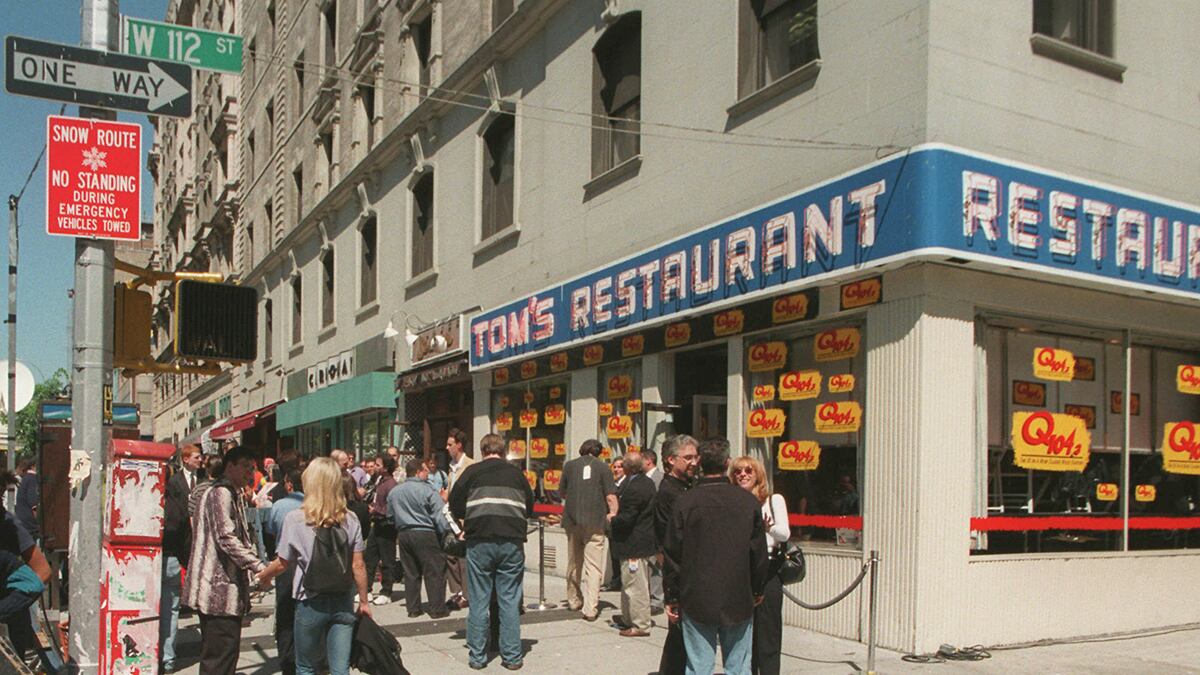Anybody who watched Seinfeld would recognize Tom’s Restaurant in upper Manhattan as one of the hit show’s landmarks. Almost nobody knows that during all the time Seinfeld was aired, and to this very day, the scientists of the NASA Goddard Institute for Space Studies led by Dr. James Hansen, were laboring directly upstairs from Tom’s, pursuing what may prove to be one of the most important investigations of our time.

Jerry Seinfeld’s TV comedy was famously called a show about nothing, yet millions still watch the reruns 14 years after its final episode. Hansen’s continuing work is about something as important as global warming, but the public barely seemed to notice the new study he and his co-author released this week regarding the recent extremes in temperature.
Never mind that the study, “Perception of Climate Change,” links global warming—and therefore human activity—to the record-breaking droughts and wildfires of late, along with the unusually intense thunderstorms and tornadoes.
Never mind that global warming appears to be triggering a kind of global derangement.
Forests burn, crops die, roads buckle, trees topple, power grids strain. One nuclear power plant nearly shut down because its cooling water is too hot to cool. Another discovers that the river level is falling to where there will be no water. Greenland’s ice melts at more than twice the usual rate, causing an iceberg the size of Manhattan to break off and drift into the sea.
And when an eminent scientist presents a convincing case that we are complicit in it all, we pay less attention than to a Seinfeld episode that has aired so many times that fans can speak the lines along with the characters.
The latest paper from the 71-year-old Hansen was presented Monday in a conference room at Columbia University’s Earth Institute, two blocks up Broadway from the little known Goddard Center and the world-famous Tom’s. Some press outlets that might have paid more attention were busy covering the latest mass shooting, this one by a white supremacist in a Sikh temple outside Milwaukee.
Hansen brought along a pair of oversized dice he made almost a quarter-century ago, right after he testified before the U.S. Senate and introduced the country to a concept called global warming. He realized after he left the Capitol that summer day in 1988 that he would need a way to explain why his thesis was not disproved by the occasional season that was cooler than usual.
Hansen colored the sides of the dice, some white to represent normal temperatures, others blue to represent cooler than normal, others red to represent unusually warm.
Dice representing the period prior to 1980, when global warming did not yet have a significant effect, would have two white sides, two blue and two red. Rolling them over time would have produced an average variation in temperatures.
That has changed even more rapidly than Hansen predicted so long ago that Seinfeld was still a year from premiering.
“Four and a half sides of the dice are now red,” he said Monday.
There still remained a chance of a cooler-than-normal season, but the odds were significantly greater that it would be warmer.
“The dice are loaded,” Hansen said.
And, with that also came an increased chance of extreme heat.
Prior to 1980, between 0.1 and 0.2 percent of the planet suffered extreme heat. That has now risen to 10 percent. So, while the average temperature has risen a seemingly unalarming 1.5 degrees over the past century, the average area of the globe hit by extremes has increased some 100-fold in three decades.
Here is the math by which what we once might have called the storm of the century or the flood of the century or the fire of the century now seems to come every year. The incidence of extreme heat has grown to where Hansen has covered one of the red sides of the climate dice with a photo of a wildfire.
“I just put this on here this week,” he said Monday about the new die configuration whose significance is known only too well in this year in Colorado and Arizona and Oklahoma.
This happened to be the same day that another division of NASA landed a rover, dubbed Curiosity, on Mars. Hansen had started out in science studying planetary atmospheres, Venus in particular. He then came to realize that he would do better to concentrate on his own native Earth. He told the Senate 24 years ago that effects induced by increased levels of greenhouse gases would lead to climate changes that eventually would become apparent to everybody. “As we now see, it has,” he said Monday, sounding as if he took no pleasure at all in being so right.
A siren could be heard from the street outside—the sort you hear when you call in an emergency such as a heart attack or a house fire—or a maybe a mass shooting. None were wailing in response to Hansen’s warning that the well-being of the entire planet is at stake.
“This is change occurring in a decadal times scale,” Hansen said.
The siren faded into the sounds of the passing cars and buses that were themselves part of the emergency that Hansen’s paper described. Each passing vehicle was burning fossil fuel and adding to the blanket of carbon dioxide that is throwing our planet out of balance.
Hansen noted that instead of significantly curtailing fossil-fuel use, we are seeking new sources in oil sands and hydrofracking—efforts whose environmental impact extend significantly beyond their extraction to their use. He suggested that what we need to do is make the companies pay the true cost of these fuels. “An honest price,” he said.
That price is now coming to include multibillion-dollar droughts, wildfires, floods, and storms—“costs borne entirely by the public,” Hansen noted.
He suggested that if the public were reimbursed, citizens could use that money to defray the added cost of alternate sources of energy that could become more economical over time.
Sadly, there seems as much chance of that happening as Hansen getting a response if he called 911 to report an emergency that will be happening over the next decade, or two of three.
Whatever happens, however it goes, it seems almost certain that many decades from now, history will remember the building that housed Tom’s Restaurant less for Seinfeld and his show about nothing than as the place where Hansen presented the study that was about more than we fully realized.
Meanwhile, the day after Hansen’s study was released, word came of torrential rain in Manila and the worst flood in years.
Maybe there should be a Climate Dice board game, where all the players lose unless they acknowledge the science and work together for the genuine good of everybody.






